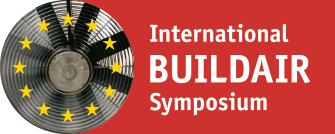Purpose of the work
Quantification and location of moisture penetration through leak-dependent creeping flows from the room into insulated, lightweight wall structures as a function of design, pressure differential, and leak position.
Method of approach
Pressure-dependent, high-precision through-flow measurement in a facade test stand and determination of the amount and distribution of condensate in a double climate chamber performed on lightweight wall sections with different cavity wall insulation and leak positioning.
Content of the contribution
Description of test rigs and test methods as well as the sensors used and their precision. Explanation of the backgrounds of the selected conditions and the choice of test and reference cases, as well as a plausibility check of the results and a comparison with literature values.
Results and assessment of their significance
The results show that moisture distribution is relatively independent of leak positions and is distributed fairly evenly throughout the entire cold side of the structures. There is almost no vapor on the external, vapor-proof paneling and in the near-surface layers of the insulating mats. The detailed evaluation of the reference rigs without deliberately introduced leaks also demonstrated certain leaks. Based on further laboratory testing, these leaks were traced to the air permeability of the adhesive bonds of standard adhesive tapes, thus requiring a correction of the measurement results. The results of the experiments revealed clear tendencies in the air flow exponents as a function of leak size within the pressure range examined. Small leaks and adhesive tapes exhibited a more laminar behavior which, in the presence of a constant pressure differential, results in a greater through-flow.
Conclusions
Truly airtight, lightweight wall structures cannot be established in practice, which is why convective moisture ingress through small leaks and adhesive bonds must be taken into account when evaluating moisture protection. Nevertheless, these leaks can be minimized through proper workmanship and by locating the leaks, thus enabling structures to remain free of damage if measured in the correct way. Because the convective moisture ingress at the back of the external paneling is distributed relatively evenly, the measurement can be performed as it has usually been done, using a one-dimensional hygrothermal simulation. In addition to dehydration due to vapor diffusion, convective drying can also occur during warmer periods.
That’s why the existing approaches for taking into account convective moisture ingress must be expanded to include a drying period. However, there is also evidence that the actual moisture ingress in winter is greater than has been previously assumed. Research needs to be done in this area, because although the existing approaches for taking into account convective ingress have been proven effective in practice, their application to other building parts not yet considered or to other climatic conditions are subject to a high degree of uncertainty.
Note
For more information, please contact the reference author at: hartwig.kuenzel@ibp.fraunhofer.de





